Review for Nadia: The Secret Of Blue Water - Complete Series Collection
Introduction
It’s pretty odd, but the genre that got me into anime in the first place, the children’s action adventure really doesn’t exist anymore. Of course I didn’t know it was anime at the time, but I grew up devouring shows like The Mysterious Cities of Gold, Around the World with Willy Fogg, Dogtanian, and Ulysses 31, and later on I would discover Sherlock Hound as well. These days, anime is aimed at a wider variety of audiences, encompasses countless genres, but tends toward the shorter form, the ten or twenty episodes instead of the thirty or forty. You can’t tell a long running action adventure in just ten episodes. Also, most of the action and adventure anime has taken on a more adult tone, is aimed at older, mature audiences, or at least the shows that we get in the West are, though given that sites like Crunchyroll pretty much get them all, it’s fair to say that Japan has moved on from this form of anime. It’s telling that when a follow up series to The Mysterious Cities of Gold was eventually made, it was a European production alone, no Japanese involvement at all.
One other thing that these shows have in common is that they were based on literary works, not manga. Homer’s Odyssey, Dumas’ The Three Musketeers, The King’s Fifth (with a healthy dose of von Daniken), Arthur Conan Doyle’s Sherlock Holmes, and Jules Verne’s Around the World in Eighty Days. It’s another Jules Verne work that inspired the show that I’m now reviewing, 20,000 Leagues Under the Sea which in anime form becomes Nadia: The Secret of Blue Water. Even though I have never seen this show before, I’m already approaching it with nostalgia goggles in place at the prospect of watching another action adventure anime. Besides, this one has some serious anime pedigree to it. The concept came from none other than Hayao Miyazaki, who was asked in the seventies to come up with a series for Toho. That series never came to fruition, but Toho maintained the rights to the concept, and it was in 1990 that Nadia: The Secret of Blue Water was made, and made by none other than Studio Gainax, directed by Hideaki Anno, who would then go on to create Neon Genesis Evangelion.
As you might expect from a show 25 years old, it does have a history in the West. After an abortive attempt to release it by Streamline Pictures on VHS, it was eventually licensed and dubbed in its entirety by ADV films, and released in the early 2000s. Following ADV’s demise, their successor Sentai Filmworks announced that they would re-release the show last year, and given that in 2011, the Japanese got the show on re-mastered Blu-ray, Sentai would release it in HD too. The UK has missed out on Nadia up till now, but for Animatsu’s second anime release, they’ve picked up the show, and they’re going straight to Blu-ray as well as DVD. This is one Blu-ray to get excited about, as Nadia comes from an age when all anime was still being made with cel and ink, with the quality shows being photographed on 35mm film. That as we know is better than 4K resolution let alone HD, and given that the Japanese have done the hard work in mastering the show for Blu-ray, it ought to look spectacular.
It’s the year 1889, the world is on the verge of a technological leap forward, the Industrial Revolution is in full swing, but the last vestiges of superstition still linger, with rumours and stories of sea monsters devouring ships at sea. It’s to Paris that a young inventor named Jean goes, eager to pit his prototype flying machine against his rivals’ in a competition on the Seine, outside the World Fair. He’s built it with his uncle; his own father is missing, presumed dead in one of the sea monster incidents. He doesn’t expect the competition to lead to a fantastic adventure, but that’s what happens when he meets an exotic young girl named Nadia. Nadia is similarly orphaned; her only family a pet lion cub named King, but the difference is that she has no knowledge of her origins, just an enigmatic jewel named the Blue Water, which she wears around her neck. It turns out that there are people out there who would do anything for that jewel, and when the chivalrous Jean chooses to protect Nadia, it’s the start of an adventure that will take them around the world, when they encounter the inscrutable Nemo, Captain of the submarine Nautilus.
39 episodes of Nadia: The Secret of Blue Water are presented across five Blu-ray discs by Animatsu.
Disc 1
1. The Girl at the Eiffel Tower
2. The Little Fugitive
3. The Riddle of the Giant Sea Monsters
4. Nautilus, The Fantastic Submarine
5. Marie’s Island
6. Infiltration of the Secret Base
7. The Tower of Babel
8. Mission to Rescue Nadia
9. Nemo’s Secret
Disc 2
10. A Crowning Performance by the Gratan
11. New Recruits for the Nautilus
12. Grandis and Her First Love
13. Run, Marie, Run!
14. The Valley of the Dinicthys
15. The Nautilus Faces its Biggest Crisis
16. The Mystery of the Lost Continent
17. Jean’s New Invention
18. Nautilus vs. Nautilus
Disc 3
19. Nemo’s Best Friend
20. Jean Makes a Mistake
21. Farewell, Nautilus
22. Electra, the Traitor
23. Young Drifters
24. Lincoln Island
25. The First Kiss
26. King, The Lonely
27. The Island of the Witch
Disc 4
28. The Floating Island
29. King vs. King
30. Labyrinth in the Earth
31. Farewell, Red Noah
32. Nadia’s Love
33. King’s Rescue
34. My Darling, Nadia
35. The Secret of Blue Water
36. The New Nautilus
Disc 5
37. Emperor Neo
38. To The Sky
39. Successor to the Stars
Picture
Nadia: The Secret of Blue Water gets a 4:3 pillarboxed 1080p transfer onto these Blu-ray discs. To my eyes, the transfer is impeccable, faithfully bringing across the source material without any signs of compression or other digital artefact. Playback is smooth, and the animation probably looks a whole lot better than when first broadcast on television, or released on DVD. That’s because coming from 1989, Nadia: The Secret of Blue Water is a traditional cel animation. Each frame was hand painted, with 24 such frames in succession making up a second of animation when photographed to what was most likely 35mm film. The restoration work for Nadia and the creation of the HD masters was done in Japan, and it’s a pretty sympathetic conversion, with the animation clean and free of dirt or significant sign of age, and with the film retaining its grain structure, not looking overly processed.
Where you might start picking nits is with that which is most difficult if not impossible to rectify, the animation itself. Remember, this is no Disney feature film; Nadia was a broadcast television show, with animators working to a weekly timetable, with no scope for overrunning, or going back and fixing errors. Cel animation was a composite technique, with a painted background in front of which layers of cel were stacked, creating the parallax necessary for motion, the individual character animations, and foreground detail and so on. It’s very easy for one of these layers to slip out of alignment, or for the whole lot not to be bedded down perfectly before being photographed, and the odd scene being out of focus (happens quite often in Nadia), or a whole frame not being aligned with the rest, or the paint being uneven. We’ve now had some 15 years of pixel perfect computer animation techniques used in anime, and it takes a bit of a mindset switch to get on board with the older animation style, but it is the nature of the beast.
As for the animation itself, it is decidedly old school in look as well, although you can see it’s something of a midpoint between older shows like Mysterious Cities of Gold, and the current vogue in anime design. The child characters have the pointed face and large-eyed aesthetic that we are more used to, while the adult character harks back to shows like Robotech (Nemo looks a bit like Captain Gloval) for their look. The show certainly impresses in terms of its mecha design, not least of which is the Nautilus itself, and the world design also makes its mark the further into the series we get, the more fantastic the story becomes. The animation can on occasion impress with bangs and whistles, but generally it obeys the economy of production line TV animation, static conversations, occasionally recycled action sequences, the dreaded triple pan across static images and so on. Once again, all it takes is a bit of getting used to. It must be said for the infamous ‘Island Episodes’ the quality of the animation does take a beating, as does the restoration, as the animators tended to cut corners a little too much around episode 24 onwards (episode 32 is pretty chronic). In episode 29, there were two cuts, around the 15 and 20 minute mark that were obviously up-scales of an SD source, there’s another in episode 30 around the 18 minute mark, another in episode 35 around 13 minutes, one in episode 36 at around 7½ minutes, but with material of this vintage it isn’t uncommon, and really only amounts to about a minute of footage in total (see All the Anime’s more recent Gurren Lagann for another example).
The images in this review are sourced from the PR, and aren’t necessarily representative of the final retail release.
Sound
You have the choice of DTS-HD MA 2.0 Stereo English and Japanese, with optional translated subtitles and a songs and signs only track. The subtitles are the usual Sentai big and yellow, and they are clear, accurately timed, and free of typos (bar one that I saw). The audio is in better shape than the video, clear and audible throughout, with no glitches, distortions or drop-outs. The original language track holds up well even today, but the English dub is certainly showing its age. Actually, for a circa 2000 dub, it feels older than that, which if you’re seeing this through Willy Fogg and Dogtanian nostalgia specs is ideal. ADV who dubbed it back then, actually cast child actors in the child roles, so it has that in common with Mysterious Cities of Gold. And there’s the occasional weird subtitle translation, such as in episode 36, where a ship called Deus Ex Machina, in both Japanese and the dub, is printed in the subtitles as “Devus, Ukis and Makina”.
Extras
The discs boot up with a very colourful Sentai logo, obviously a recent change, and while this is only the second Animatsu anime release their logo gets some added animation following the static logo of Gatchaman Crowds; The Siren Visual logo is the same old one. The discs present their content with static menus, although each disc offers different artwork from the show for its menu. The first four discs merely present the episodes and the language options.
Disc 5 holds the extra features, and you’ll find the two textless openings, the textless closing, a 5:05 Japanese Promo, and a 0:32 Japanese Spot, the latter two subtitled, all presented in 1080i 60Hz, up-scaled from an SD source.
You’ll also find trailers for Girls und Panzer, Kokoro Connect, From the New World, and Little Busters! All except the latter are available in the UK, albeit through MVM.
Conclusion
Nadia: The Secret of Blue Water is one of the best 26-episode anime series to come from the early nineties. Unfortunately, it’s 39 episodes long. Someone at Toho or the broadcaster N.H.K. realised early on that they had a success on their hands, and ordered the series to be extended. When you have a pre-determined story that you’re trying to tell, that can only be done by padding, filler, and recap episodes, so what we get here is a great, action adventure series, with no little romance, but with the distraction of what can best be described in terms of Doctor Who’s ninth Doctor as domestic. These are the infamous island episodes, which thankfully for those who would prefer to skip such stuff, are mostly in one block. It’s interesting to note that Hideaki Anno only directed 27 of the episodes in the series, and apparently the experience of directing the show triggered the infamous depression from which Neon Genesis Evangelion was born.
Personally, this show hit all the right notes with me, playing in the same sandpit as Mysterious Cities of Gold, with three child protagonists, one with a mysterious past, going on an adventure to seek out that past, and in the process uncovering lost civilisations, an unknown history, and a conspiracy to conquer the world, as well as throwing in more than a few Von Daniken ancient alien references as well. It also has the added benefit of being set at the end of the 19th Century, so no little steampunk issues forth as well, not least by using Jules Verne’s 20,000 Leagues Under the Sea as a starting point. But Nadia: The Secret of Blue Water goes one better by making the characters more interesting, engaging, and for the most part likeable. And for a medium that can be ethnically monochrome even now, reflecting the homogeneity of Japanese society, Nadia is a refreshing series protagonist in that she’s of a different ethnic origin. The series even makes use of that fact early on, alluding to the discrimination that someone of her appearance might face in Paris, 1889.
Jean is the young male protagonist, a would-be inventor on his way to the Paris Exposition, to take part in a contest for flying machines, with one that he has created with his uncle. As a young male, he’s apt to be distracted by a beautiful girl, and that’s what happens when he sees Nadia ride past on a bike, mysterious, different and beautiful, and friends with a pet lion cub named King. He gets a frosty reception when he offers to take Nadia flying, but gains a little more sympathy when he rescues Nadia from three thieves that are after Nadia’s blue crystal, that she wears as a necklace. Grandis Granva and her henchmen Sanson and Hanson are introduced early on as the comedy villains, in it for material gain only, but possessing a remarkably versatile tank that is probably worth more than what they try to steal. The first few episodes follow Nadia and Jean as they try to stay one step ahead of this trio.
It also sets up the romantic dynamic of the show, with young, first love always on the verge of blossoming, but always scuppered by conflicting personalities. Jean believes in science and the ability of man to create his way out of any problems; he has an analytical mind, he’s more materialistic too. Nadia on the other hand is more in tune with nature, has an ability to understand animals, and having been raised in a circus, witnessing the cruelty and abuse meted out to circus animals, and the matter of fact way that old animals are disposed of, she’s got an innate revulsion to violence, as well as being a vegetarian. But the one thing that she and Jean have in common is that they are both orphans. Nadia has no knowledge of her past, her parents, or even where she came from, other than a vague feeling that she was born somewhere in Africa. Jean on the other hand recently lost his father to what’s rumoured to be sea monster attacks.
The rumours take centre stage when their flight from Grandis takes them towards the ocean, where they encounter a battleship hunting the sea monsters. Only the sea monsters turn out to be technologically advanced submarines, and they wind up aboard the Nautilus captained by the enigmatic Nemo. The rules are different beneath the waves, and it turns out that while avoiding the surface navies, Nemo’s actually hunting the other submarines, Garfish to halt their depredations. But facts are not forthcoming; Nemo’s tight-lipped, as are his crew, which frustrates Jean who wants to explore the submarine’s workings, but infuriates Nadia who sees Nemo as a cold-hearted killer.
It’s a short lived first encounter as Nemo gets rid of his charges by depositing them on a nearby island, but it’s here that Nadia and Jean learn of the other side of the equation. Unknown to Nemo, the island had been taken over by his personal nemesis, the Neo Atlantis group led by the masked Gargoyle, and where they are constructing a super weapon. They’ve either wiped out or enslaved the island’s original inhabitants, and when Nadia and Jean discover an orphaned survivor named Marie, they wind up adopting her, helping her hide from Gargoyle’s men. They help Marie come to terms with her grief, and she also finds a new friend in King. But it becomes more personal when it transpires that Gargoyle too is after the Blue Water crystal that Nadia wears, and for a more ominous purpose than the simple larceny that Grandis and her men are trying to commit. The Blue Water’s secret reaches far back in time, and conveys great power, and it’s that power that Gargoyle seeks. It looks as if he’s obtained it too when he captures Nadia, but Jean teams up with Grandis to help rescue her, and when Nemo arrives to thwart Gargoyle’s plans, Jean, Nadia and Marie, as well as Grandis, Sanson and Hanson wind up on the Nautilus, this time as permanent crew/passengers.
From here the main thrust of the story develops, Nemo’s secret war against the forces of Gargoyle and Neo Atlantis, and Nadia slowly piecing together the fragments of her past, discovering her history, and learning just how she fits into this conflict. It’s a fascinating and exciting adventure that has plenty of twists and turns, a cast full of interesting and well-fleshed out characters, and oodles of great revelations and developments, none of which I’m going to spoil here.
The problem is that need to expand the show from 26 or so episodes to 39. There are a couple of episodes early in the run that feel like padding, 20 or so minutes of inconsequential triviality topped off with a single plot development. Grandis quickly falls in love with Nemo, and tries to fit in on the Nautilus, although an episode of her cooking for him seems a bit like filler. There’s a whole half episode of Marie playing with King, which gets tedious quickly; you really want it to get to the point, which it eventually does and your faith in the episode is restored. But these early distractions are nothing as to what happens in episode 23, where Nadia, Jean, Marie and King are ship-wrecked on a desert island.
To this point, Jean and Nadia’s relationship has been developing, the two slowly, falteringly falling in love, and now they get some quality time together. It should be a chance for their relationship to develop, deepen, but in a story arc that should at the most be two episodes long, this gets stretched out to eight or so, and there are too many, silly, out of character hi-jinks that get in the way. Jean keeps trying to get Nadia to eat meat, to the point of sneaking it into her food, in a way that just seems nasty, while Nadia’s independent streak and belief in nature gets stretched beyond plausibility (wait for the Tarzan moment). The romance and tender moment of their first kiss is belittled by magic mushroom hallucinations. At which point we get a whole episode of King being jealous. You’re almost thankful when the floating island appears, and we find Grandis, Sanson and Hanson again, along with a character named Ayerton who was briefly encountered early on in the series run. You’d think that we might be getting closer to the story once more, and indeed there is a major plot development in all this, but it’s still buried beneath four episodes of shipwrecked shenanigans, including an episode where Sanson and Hanson build robot versions of King to have a race around the island to see who the better man is.
They eventually escape and head to Africa where they encounter a local tribe that worships a can of food. It’s also here that Nadia (who to this point has been sweet on Jean, even though she has difficulty admitting it to herself) abruptly decides that she’s in love with a local boy named Hamahama. This is the worst development in the show, its nadir, as Nadia has been created as a strong, independent, principled character, and suddenly her eyes are turning into pink hearts at the sight of this tribesman. It had me actually thinking ill of her, her apparent betrayal of the boy she was just kissing on a desert island. She only comes to her senses when she meets Hamahama’s fiancé. This is pretty much character assassination in two of the dumbest episodes of the run.
Their journey continues in the next episode, which is the most creative filler episode I have seen in anime. It’s a recap episode, like so many others, but Jean is trying to recapture Nadia’s affection, and he’s been advised to be a man about it, and serenade her. This is the musical episode of Nadia: The Secret of Blue Water and everyone gets a song, not just Jean. It’s also got a great punchline, as Jean’s song when he finally sings it, cuts a little too close to the bone. But this is the end of the filler episodes, and once Nadia’s search for her origins resumes and she gets closer to the truth, it’s full steam ahead to the fantastic and epic finale to the show.
Nadia: The Secret of Blue Water is tremendous fun. It’s rip-roaring anime adventure in the style of the serials that I grew up with, but with depth of character and a greater complexity of narrative that you would expect from shows of the nineties, and especially from director Hideaki Anno. If you’re a fan of Evangelion, it’s also a delight to watch the show and spot little ideas and notions that would reoccur, be developed in different directions in that later show (wait until you meet ‘Adam’). With Shiro Sagisu serving as composer for both shows, there are a couple of moments where you hear a cue, and think, I’ll hear something like that again in Evangelion. And while Nadia does have its problem with filler, that filler is never dull or tedious. Even in its dafter moments, it’s ridiculous, out of character and anachronistic flights of fancy as Nadia and Jean enjoy their ship-wrecked idyll, you will be entertained. You’ll be rolling your eyes, but you’ll be entertained. But the rest of the show is well-crafted, exemplary storytelling. This Blu-ray release is a fantastic way to watch the show, giving the episodes an excellent transfer, where the only issue is the vintage of the source material itself. You can’t ask for more than that.
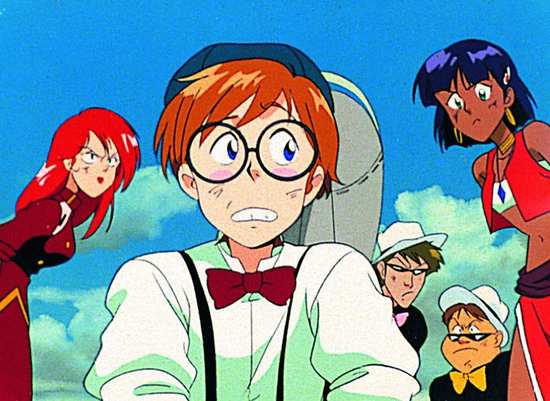
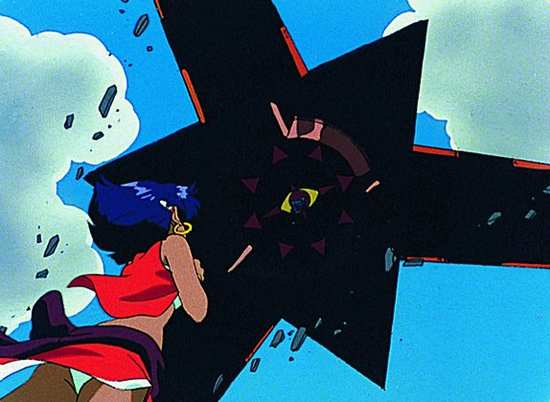
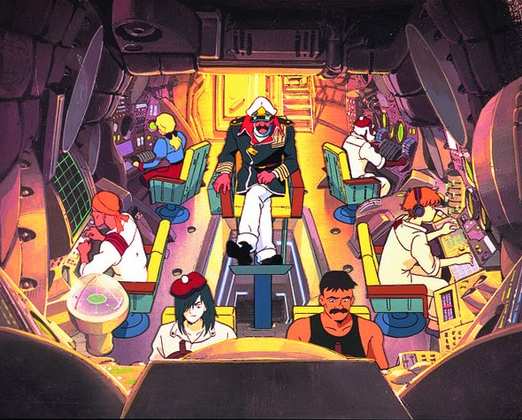
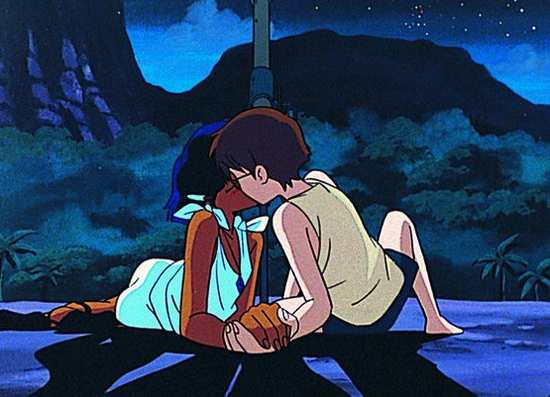
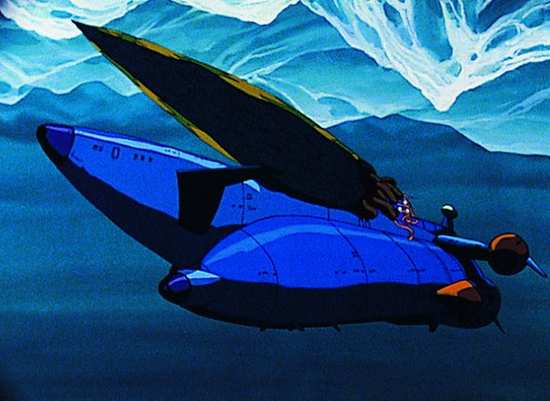
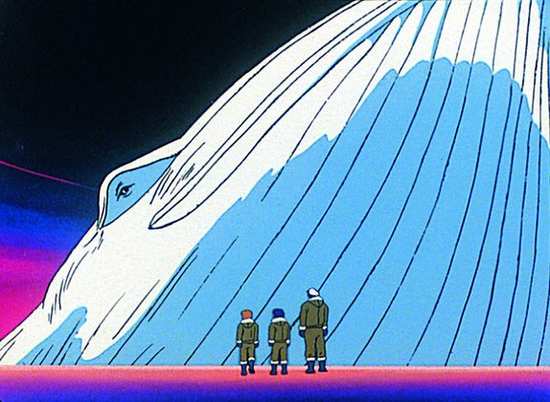
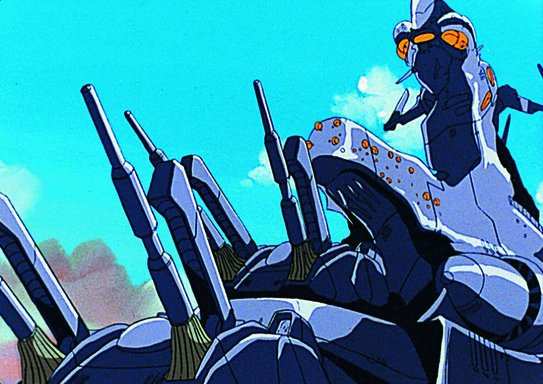
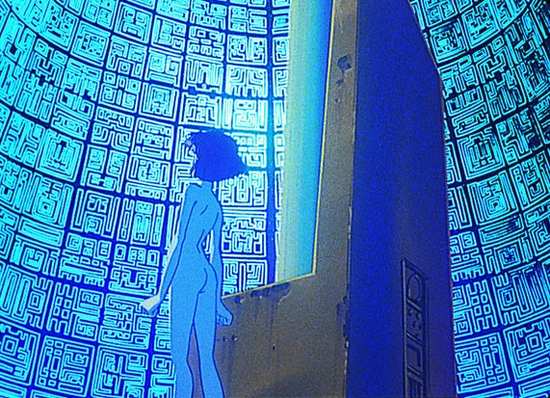
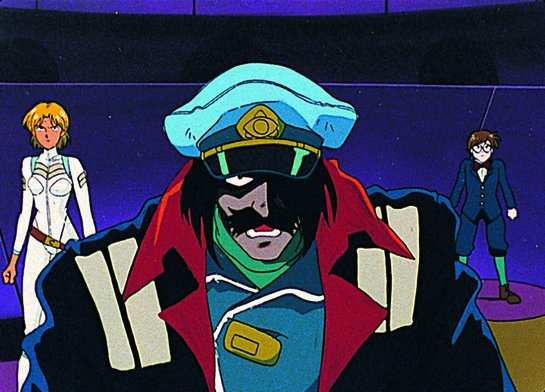
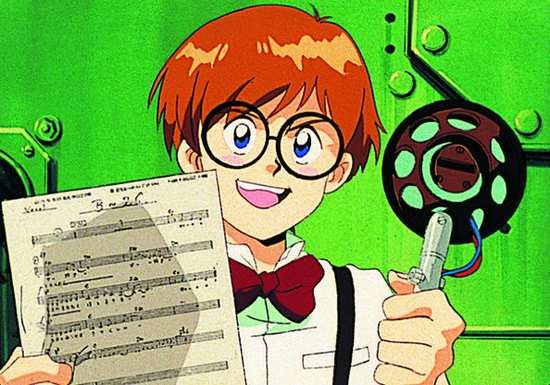
Your Opinions and Comments
The best thing about this masterpiece is the character development and writing. This is by far one of the most enjoyable, relatable and well written cast of characters in a work of fiction. The music too is amazing. Could be Shiro Sagisu's finest work.